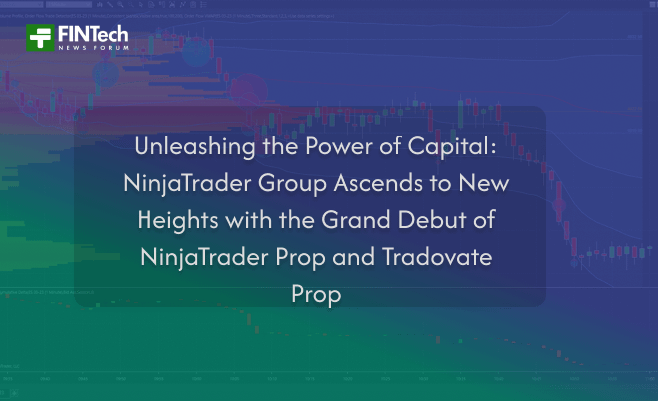
The investment banking landscape, particularly within the dynamic realm of technology, is defined by constant evolution, specialization, and the intense competition for elite advisory talent. In a move that signals a significant expansion of its national footprint and a doubling down on specialized sectoral expertise, Cascadia Capital has announced the appointment of Jonathan Cantwell as its new Head of Technology Investment Banking.
This appointment is far more than a routine personnel change; it represents a strategic inflection point for Cascadia. It is a calculated response to the volatile yet opportunity-rich environment facing middle-market technology companies today. To understand the gravity of this decision, one must look beyond the press release and examine the confluence of market dynamics, Cantwell’s specialized pedigree, and Cascadia’s ambitious roadmap for the next decade.
The Technology M&A Market: A Demand for Specialized Rigor
The technology sector, particularly in the post-pandemic era, has become increasingly complex. Capital market uncertainty, rising interest rates, and a pervasive pressure on companies to demonstrate profitability alongside growth (the “Rule of 40” mandate) have fundamentally altered the M&A playbook. The days when growth alone guaranteed a high multiple are largely over.
Today’s technology transactions require bankers who are not merely generalists, but deeply embedded sector experts capable of articulating nuanced value propositions in areas like vertical SaaS, cloud infrastructure, AI integration, and cybersecurity resilience. These deals are often characterized by non-traditional structures, complex earn-outs, and intense scrutiny from both strategic acquirers and private equity firms focused on operational leverage.
This is precisely where Cascadia Capital, headquartered in Seattl- city synonymous with deep tech innovation-has historically excelled. Its niche has been the often-underserved middle market, offering bespoke advisory services typically reserved for bulge-bracket transactions. The decision to bring Cantwell aboard, a veteran known for navigating intricate transactions in high-growth software and FinTech, directly addresses the need for heightened specialization at scale.
The Middle-Market Tech Thesis
The middle market-defined generally by companies with enterprise values ranging from $100 million to $1 billion-is the engine room of North American technology innovation. These firms possess proven business models but require sophisticated guidance to access optimal buyers, navigate global regulatory hurdles, or secure growth capital without compromising founder vision.
Cascadia’s commitment to this segment is based on a foundational belief: that specialized, senior-level attention provides superior client outcomes compared to the rotational associate model common in larger banks. Cantwell’s mandate will be to deepen these relationships, ensuring that Cascadia is positioned not just as an advisor, but as an indispensable strategic partner throughout the entire lifecycle of a technology venture-from initial minority recapitalization to eventual strategic exit.
Spotlight on Jonathan Cantwell: A Pedigree of Precision
Jonathan Cantwell’s professional journey establishes him as a definitive leader suited to this critical role. His background is marked by extensive experience advising founders and financial sponsors across highly specific technology verticals.
Prior to joining Cascadia, Cantwell built a reputation at large, global institutions, where he was consistently involved in complex mergers, acquisitions, and capital raises. His expertise is generally centered on transactional rigor, combining a sophisticated understanding of capital structures with a keen eye for technological product differentiation.
The value proposition he brings is multi-faceted:
1. Deep Vertical Expertise: Cantwell is renowned for his work in mission-critical software. This includes enterprise resource planning (ERP) solutions, specialized vertical application software (V-SaaS), and sophisticated data analytics platforms. In a market where generalist bankers often struggle to articulate the technical defensibility of a platform, Cantwell’s ability to speak the language of engineering and product management is a distinct advantage.
2. Global Transactional Experience: The technology M&A market is inherently global. Many of the most attractive buyers for U.S. and Canadian tech firms are international strategic entities, particularly those in Europe and Asia seeking faster access to cloud-native technologies. Cantwell’s experience in structuring cross-border deals ensures that Cascadia can effectively maximize the buyer pool and mitigate the operational challenges inherent in global transactions.
3. Fiduciary Leadership and Client Trust: In the middle market, the relationship between a founder and their investment bank is deeply personal. Often, the sale of the company represents the founder’s life’s work. Cantwell’s philosophy emphasizes proactive communication, transparent process management, and an unwavering commitment to fiduciary responsibility. This high-touch, trust-based approach aligns perfectly with the culture Cascadia has cultivated in the Pacific Northwest.
Cascadia’s Expanded Geographic and Sectoral Strategy
Cantwell’s appointment is not simply about maintenance; it is about aggressive, targeted expansion. While Cascadia has long maintained a strong presence in the Pacific Northwest and the West Coast corridor, this move is designed to solidify its national standing and penetrate key emerging tech hubs.
Beyond the PNW: Targeting Next-Generation Tech Hubs
While Seattle remains a critical anchor-home to giants in cloud computing and e-commerce-Cantwell is expected to drive greater institutional presence across the emerging hubs that are capturing significant venture and growth capital. This includes cities like Austin, Denver, and key pockets of the East Coast where specialized, high-margin software firms are reaching critical mass.
By strategically placing senior leadership with Cantwell’s credentials, Cascadia is positioning itself to capture advisory roles earlier in the lifecycle of these companies, thereby building a proprietary deal pipeline less dependent on traditional bidding processes.
Focus on Secular Tailwinds
Under Cantwell’s direction, Cascadia’s technology group is expected to increase its concentration on areas driven by powerful secular tailwinds:
- Cybersecurity and GRC (Governance, Risk, and Compliance): As regulatory scrutiny intensifies and the threat landscape grows more sophisticated, investment in cybersecurity solutions remains recession-proof. Cantwell’s team will focus on firms specializing in identity management, threat detection, and advanced compliance software.
- Applied AI and Machine Learning: The transition from experimental AI to commercially deployed solutions is accelerating. The focus will be on software companies that embed AI capabilities into existing enterprise workflows, delivering measurable efficiency gains (e.g., AI-powered underwriting, predictive maintenance software).
- Financial Technology (FinTech): While often cyclical, FinTech remains ripe for M&A, particularly in regulatory technology (RegTech), embedded finance, and B2B payment infrastructure. Cantwell’s prior experience in this area is crucial for navigating the complex valuations and regulatory hurdles specific to this intersection of finance and technology.
Navigating the Current Headwinds: The Role of Strategic Advisory
The overarching challenge facing the Head of Technology Investment Banking is the management of founder expectations amidst macroeconomic uncertainty. The era of inflated “COVID multiples” has passed. Founders today need realistic, data-driven assessments that acknowledge the current valuation environment.
Cantwell’s immediate challenge will be educating clients on the importance of operational discipline. Acquirers, particularly Private Equity, are no longer paying premiums solely for revenue growth. They are scrutinizing customer acquisition costs (CAC), net dollar retention (NDR), and long-term customer value (LTV).
A strong advisory team, under Cantwell’s leadership, must shift the narrative from sheer growth to quality of earnings and efficiency of operations. This involves:
- Pre-transaction Preparation: Working with clients months, sometimes a year, in advance to clean up financial models, optimize sales channels, and ensure clean diligence data.
- Narrative Crafting: Developing highly specific investment banking materials that articulate the company’s path to profitability and its competitive moat, rather than generic market opportunity summaries.
- Private Equity Relationship Management: Understanding the shifting mandates of major financial sponsors who are now actively seeking carve-outs and take-private transactions focused on deep operational restructuring. Cascadia’s capability to connect middle-market founders with the right financial partner is heightened by Cantwell’s institutional relationships.
Conclusion: Cascadia’s Commitment to Elite Specialization
The appointment of Jonathan Cantwell as Head of Technology Investment Banking is a clear declaration of Cascadia Capital’s intent: to not only maintain its strong regional standing but to significantly escalate its position as a preferred national advisor for high-growth, middle-market technology companies.
In an environment demanding specialized expertise, strategic rigor, and an intimate understanding of complex technological value chains, Cantwell’s leadership provides the necessary foundation for Cascadia to successfully guide founders through the next cycle of mergers and acquisitions. This move fundamentally strengthens Cascadia’s ability to compete with much larger institutions by offering superior, deeply specialized senior talent-a critical differentiator designed to benefit the founders and innovators who are shaping the future of the digital economy. The firm is now better equipped than ever to navigate the specialized currents of modern tech M&A, solidifying its role as a key player on the national technology advisory stage.















